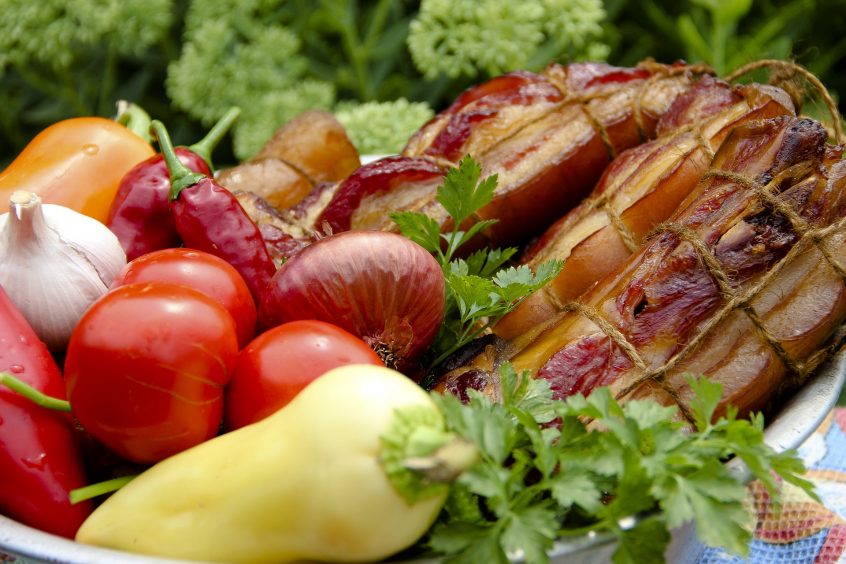The third instalment of my analysis of popular dieting trends investigates the Palaeolithic diet. In this article I’ll discuss what the diet is about, analyse the scientific evidence available and give you my verdict on whether it is worthwhile or not.
The diet
The Palaeolithic or ‘paleo” diet aims to duplicate the diet of early humans from more than 10 000 years ago before we relied on agriculture. It is based on the premise that we haven’t genetically evolved during this time so agricultural diets are making us chronically ill. Instead, supporters of the paleo diet believe we should eat more like our Palaeolithic ancestors, with a diet based on foods that can be hunted or gathered improving our health and longevity.
The diet includes food that can be hunted including meat, fish and seafood. It also includes food that can be gathered like eggs, nuts, seeds, vegetables and fruit. The modern versions of the paleo diet also include some oils like olive oil and coconut oil.
The paleo diet avoids all grains, legumes and dairy products. It avoids salt, sugar, refined oils and processed foods. It avoids alcohol. It also avoids potatoes, which is strange considering similar vegetables are allowed.
The evidence
Several premises of the paleo diet are not supported by scientific and historical evidence.
Anthropologists have stated that it is not possible to give a general prescription of an evolutionary appropriate diet. It is widely accepted by experts in this field that there are in fact many diets from the Palaeolithic era. There was great diversity in these diets depending on the foods that were locally available in the region as well as seasonal availability. Quantities would have been small. Vegetation was likely to be tough, woody and fibrous. Meat was likely to be lean with no wastage, therefore marrow and offal would also have been consumed. Grinding tools dated to more than 30 000 years ago provide evidence that our Palaeolithic ancestors were also likely to have consumed grains.
Humans have evolved over the past 10 000 years and so has our food supply. Foods encouraged on today’s paleo diet are not similar to what our Palaeolithic ancestors ate. The food supply today is of domesticated and farmed foods rather than wild plants and animals.
Despite these discrepancies and the lack of anthropological validity, it is also important to consider whether today’s paleo diet may be beneficial, even if it is not historically accurate.
Unfortunately most of the claims made about the paleo diet are simply not supported by evidence. It does not provide exceptional results in terms of weight loss and other health benefits. There is some evidence to suggest short term improvements in weight, waist circumference, blood pressure and lipid levels, however these are not consistently observed in the long term. In comparison, there is good evidence to suggest that diets high in wholegrains are associated with lower weights and waist circumference.
Possible benefits
The paleo diet is a high quality diet with lots of fresh foods including meat, fish, eggs, nuts, seeds, vegetables and fruit. Diets high in plant based foods are beneficial for promoting good health and wellbeing.
Avoiding processed foods that are high in fat, sugar, salt and have very little nutritional value is an excellent change and another positive aspect of this diet. Avoiding alcohol is also beneficial for health.
Possible side effects
Most current versions of the paleo diet encourage high levels of meat consumption. This is contradictory to current health advice and growing scientific evidence to reduce our meat intake for health and wellbeing.
The paleo diet may also be low in fibre. While fruit, vegetables, nuts and seeds provide dietary fibre, our richest sources of fibre include wholegrains and legumes. By removing grains and legumes from the diet it can reduce fibre intake which can affect gut health.
The diet may also lead to possible nutritional deficiencies. By avoiding dairy products, the diet is inadequate in calcium. This may increase the risk of osteoporosis.
Studies have shown that the paleo diet can also be expensive. The current versions lack variety which may affect palatability and adherence.
In a nutshell
While a paleo diet may result in some short term improvements in weight, waist circumference, blood pressure and lipid levels, it is unlikely to continue to produce long term results. There are definitely some aspects of the traditional Palaeolithic diet that we can learn from and incorporate into our lifestyle. These include:
- Choosing a wide variety of nutritious foods
- Increasing our intake of vegetables and fruit
- Choosing fresh, local, seasonal foods
- Choosing whole foods that are high in fibre
- Reducing our intake of processed foods that are high in fat, sugar and salt
- Reducing alcohol intake
We should also remember that our Palaeolithic ancestors were incredibly active. Perhaps we should also strive to increase our physical intake and find joy in moving our bodies every day.
If you would like help with developing healthy eating or lifestyle behaviours, or if you would like practical assistance for making any of these suggested changes to improve your health, please contact me. You can find my contact details and how to book an appointment on our website at www.zestinfusion.com.au.
Share this Post

